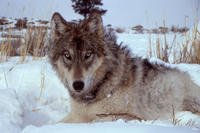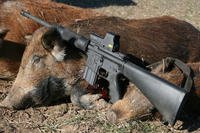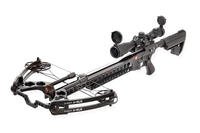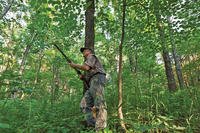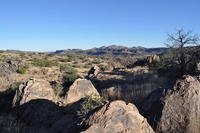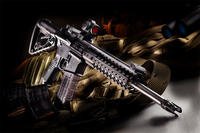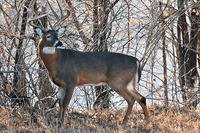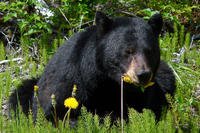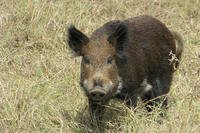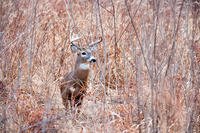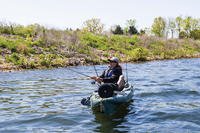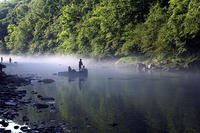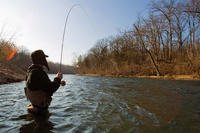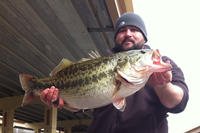Today’s predator hunter has a host of products to use in the field, but what does he really need?
by Mark Kayser
Everything but the kitchen sink. That's how I often feel when heading for a predator setup. With so much great gear out there, can you blame me? Predator hunting is an ongoing education and gear choices change with the times, but if you want to assure yourself some fur make sure you have these basic items handy when a pair of gleaming eyes stares at you.
Beam Me Up, Scotty
Don't retire your handheld calls, but do purchase an electronic call to expand your predator vocabulary. Electronic calls have evolved into lightweight, reliable, realistic-sounding devices. Look for an E-caller with the capability to play four or more calls, and two simultaneously. Some models have a dozen or more sounds stored on internal memory. A wireless operation with a remote is a big factor. You can place the call away from your location so incoming predators focus on the sound, not you. Make sure that the speaker delivers sound downrange without crackles, feedback or echoes. I've been field-testing the new Johnny Stewart Preymaster wireless caller and coyotes love it until they meet my 40-grain hollow-point.
Whether you choose a handheld or an electronic, add confidence calls to your setup. To relax educated and schizophrenic coyotes use calming sounds such as the caw of a crow or the yak of magpies. Both scavengers pester coyotes for leftovers. Coyotes key on the noisy birds since their aerial observation often reveals potential danger, or a potential meal. Another confidence booster to coyotes is the howl of another coyote. The simple imitation of a howl is all that's needed to bolster a coyote's confidence and set it in motion. Coyote whines, yips and growls also add the illusion of other coyotes cruising or arguing in the area. Confidence sounds can move a hung-up target into range.
Is That You?
Hunting without a binocular is like fishing without tackle. Whether hunting bobcats in Maine or coyotes in Arizona, a binocular helps identify a strange shape in the brush or eyes peering at you from 400 yards away. The secret is not to use too much magnification. Stick to powers of 10X and below with 8X being the best all-around candidate. The same is true of objective size. Large objectives might seem crucial, but multi-coating on lenses can achieve the same light-gathering results, and save weight.
Pack along a rangefinder and use it before you call. Range several prominent objects in your watch area so you don't have to attempt it when action unfolds — and it can unfold fast.
Finally, cover all optics to keep moisture and dust from affecting your view. The Crooked Horn Outfitters Bino-Shield covers a binocular completely and with a flip of the cover it provides access. Protect a riflescope in the same manner. The easiest riflescope covers to operate are flip-up models.
Hit Something
If you want to hit predators consistently, use bipods or shooting sticks. Bipods, such as those manufactured by Harris, attach and detach in seconds, and fold down for an in-the-field shooting bench. If you don't like attachments on your firearm, use shooting sticks. If you like tradition, check out the Quik-Shot oak sticks manufactured by Hunter's Specialties. If you like folding models, test John Underwood's rests, which fold out and accommodate all shooting styles depending on the model you purchase. Crooked Horn has a great flip-open set, too.
Where id I Put That?
Successful predator hunters organize and carry their gear in a daypack. Look for models with large compartments to tote electronic calls, extra mouth calls, ammunition and skinning gear. Small compartments aid in storing headlamp, flashlight, scents, calls and gloves. And don't forget compression straps to lash a jacket after you work up a sweat hiking.
Make sure shoulder straps are well padded and include a nonslip coating to keep a rifle sling from slipping. If you carry a heavy load, a padded hip belt is a must to transfer weight to the hips. Plus, consider a pack with an internal frame for load-bearing support. I've had great luck with Cabela's Bow/Rifle Pack, but also look at Badlands, Blackhawk and Crooked Horn Outfitters for rugged models.
Ahhh … That Feels Better
Few landscapes are rump-friendly. To make your time on the ground comfy, invest in a padded seat or ground-level chair. You'll stay dry, comfortable and sticker free, and stay still longer because of the comfort. Hunter's Specialties has two models including the Two-Way Strut Seat or the Bunsaver Ground Seat. I also notice more and more predator hunters wearing turkey-style hunting vests. Loads of pockets, a large storage compartment and, of course, a built-in padded seat means more field time for what was formerly only a "turkey" accessory.
Stylin'
Getting away from the roads and crowds means hiking, and hiking means working up a sweat. Most predator hunting takes place in cold weather so choose clothes that transport sweat away from your body so you can stay warm. Choose a polyester-based material to ride against your skin. Ventilation zones speed up moisture removal while high-loft fleece locks in body heat. Insulate with fleece, synthetics or even down, but to ensure you stay dry, wear a high-tech waterproof outer layer. Suede-finished fabrics mean your waterproof system is also whisper-quiet.
Who Is That?
Predators coming to a call are looking for something: either prey in distress or another coyote, based upon your calls. With eyesight to match a pronghorn's and a hunting mind to match your own, a coyote needs to have something to look at when he arrives.
Most hunters strive to imitate a wounded rabbit, rodent or bird, and several companies now manufacture decoys that electronically vibrate, shake, rattle and roll to portray a prey animal kicking and breathing its last breath. The Whirling Woodpecker by Outfoxed, the Deceptor Rabbit by Western Rivers and the Mojo Critter by Mojo Decoys are attention grabbers.
Coyotes are quick to check out new howls in their territories and a strategically placed coyote decoy can lure an inquisitive coyote. For coyote decoys, think lightweight, and Montana Decoy has two great flip-open models — a sitting and a standing coyote. If you don't mind packing extra weight look at 3-D full body models by Flambeau and Edge Expedite.
No need to tote the "kitchen-sink" — these essential items will put you in control of most predator-calling setups when gleaming eyes are upon you.
